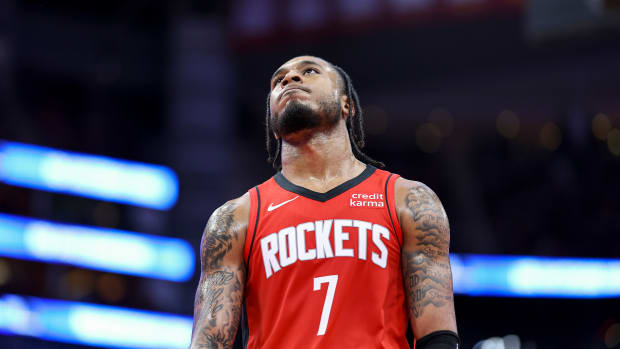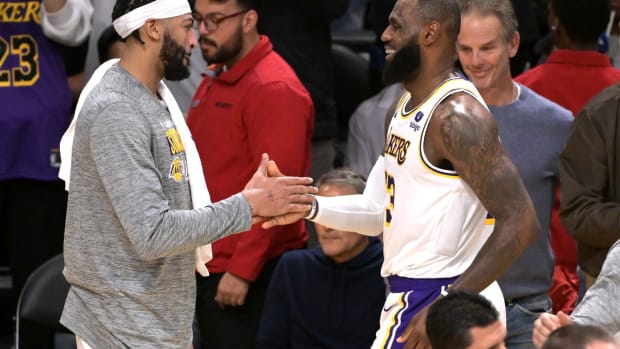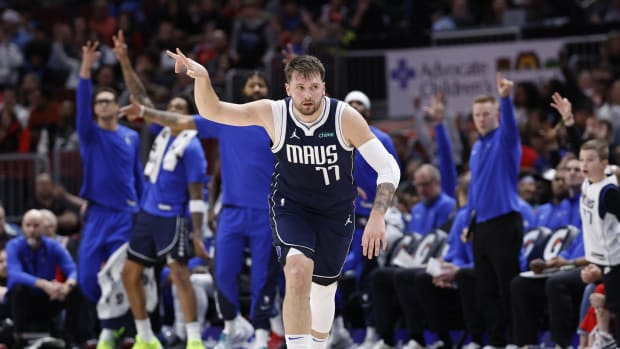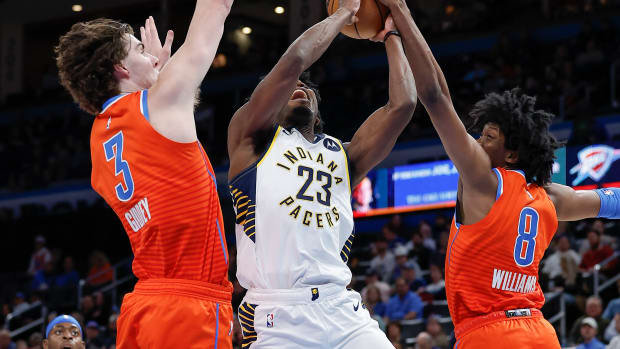Jaylen Brown, Gordon Hayward and the Celtics' Search for Clarity
When Jaylen Brown returned for the Celtics after a three-game absence, he found his team on a three-game winning streak. It was a loud bit of coincidence. Boston’s sudden turn in fortune wasn’t really about Brown, in part because so little with the Celtics had been. One of the most fascinating young players in the league had become one of its preeminent wallflowers. To even notice Brown became a sort of indictment—evidence that his game, on that particular night, had tilted so far out of its usual balance as to command attention.
Power Rankings: Signature Performance Pushes Nuggets to No.1
Brown, more than any other Celtic, has seen his game shaped to fit over the past year. Boston needed Brown to stretch himself as a creator last season, when both Kyrie Irving and Gordon Hayward were sidelined by injury, and to box that creation back up this year now that both stars have returned to the lineup. Hayward’s reintroduction has been an ordeal in itself, resulting in a move to the bench for the All-Star forward that has proven helpful for all involved. Brown followed the same track, his injury granting Brad Stevens a certain creative license. It’s hard to project what would have become of the Celtics had Brown never soared for a block attempt against the Mavericks and thus never crashed to the floor on his tailbone. The only knowable reality is what’s happened since: a lasting lineup change that granted the Celtics a sense of order and, with it, eight wins in their last nine games.
Boston has its killer starting lineup—just not quite the one it envisioned. Stevens replaced Hayward with Marcus Morris, a beefier wing with a simpler game, and Brown with Marcus Smart, a guard who approaches every 50-50 ball with life-or-death gravity. It’s a less talented starting five than the Celtics had hoped, yet within it those talents stretch further. What was the 27th-ranked offense before the change has been the best in the league since—separated by an incredible 16 points per 100 possessions, according to according to NBA.com. Some of that success is owed to the schedule (Boston’s recent opponents are a who’s who of miserable defenses) and some to randomness (no team this good was going to shoot 30% on corner threes forever). Some other, not insubstantial part seems a direct result of the evolving rotation.
What Morris and Smart lack for clout they make up in clarity. A pass to Morris just doesn’t come with the same baggage that one to Hayward might. There isn’t the same pressure for him to make a play or the same need to look comfortable alongside other stars. There isn’t the same collective yearning for every shot—any shot—to just go through the hoop. Morris has the luxury of just playing basketball. Frankly, he’s never looked better. Shooting well always helps, though so does internalizing the rhythm and pattern of an offense. Morris could never do all that a healthy Hayward could. Boston doesn’t need him to, and through the opening stretch of the season found that the contributions of both players could be better allocated.
Hayward shifted to the bench, where he now effectively runs the point, and Boston found itself in need of another playmaker to relieve Irving. Given that Brown and Jayson Tatum don’t quite read the game on those terms, Stevens deferred to Smart. Define Smart’s position at your own risk. He’s not quite steady enough to be a full-time point guard and clearly, definitively, emphatically not a good enough shooter to be a shooting guard. What he is, however, is an asset to any team that can afford to keep him on the floor. If a lineup is constructed to compensate for Smart’s lack of range, then the rest of his contributions—the cuts, the contested rebounding, the gutsy scores and gutsier stops—can prove vital. The issues that Smart presents are ones that, in a regular season context, Boston can manage. Smart, meanwhile, helps the Celtics to force the issue in ways they desperately need.
At its worst, Boston’s offense through its 10-10 start proved listless and flimsy. Stevens implored his players to push past their urge to settle, but wound up gritting his teeth through a procession of mid-range jumpers. Messages were sent. Priorities were reinforced. But if a team is looking for players who will drive hard and follow through on the intentions of the offense, a recovering star and a 22-year-old stuck firmly in his own head are not exactly the ideal vehicles. Moving both to the bench affords Hayward and Brown all the room they need to work out the kinks while the starters move forward.
Move forward they have. Irving is playing with punch, running down the best shots from every semi-transition opportunity he can find. Tatum has lost some of the snake oil from his game. Not only has Boston been the best-shooting team in the NBA since making these changes to it rotation, but also the top outfit on the offensive glass. As intended, the Celtics are getting to the rim more often, and finishing there at a rate (67.8%) that would tie Milwaukee for the best mark in the league. The spacing is clearer, the hierarchy is more accommodating, and the players involved are making an actual effort to progress toward the basket.
It isn’t enough to be skillful. For Boston to make good on the promise of this roster, it has to play in a way that actively challenges opponents—a more confrontational style than lilting mid-range jumpers allow. Fortunately for the Celtics, confrontation may be what Morris and Smart do best.




































